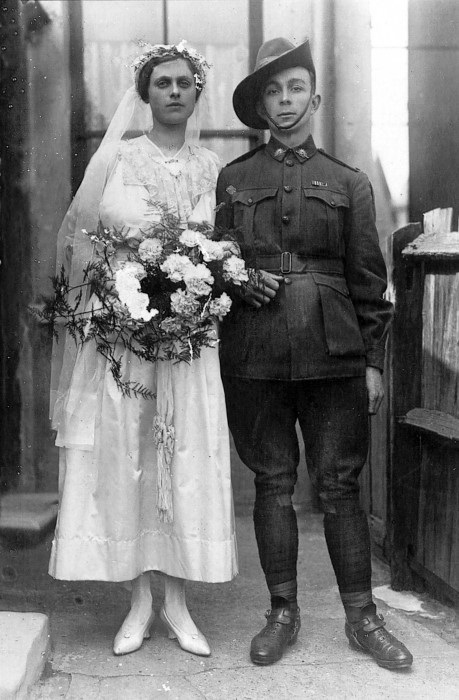Dora Ohlfsen-Bagge
Adela Dora Ohlfsen was a member of a very musical family from Minto, where her father, Christian Ohlfsen-Bagge managed a poultry farm. She travelled widely, studying and teaching music and art in Germany, Russia and Italy. Whilst studying engraving in Italy, the war broke out so she signed up to the Red Cross as a nurse. She worked tirelessly throughout the war, and witnessed the devastating toll that the war had on the civilian population. In 1919 she developed the 'ANZAC Medal' which was sold to raise funds to support Australian and New Zealand troops. The front of the medal depicts a young woman, who represents Australia, bending over a young man to place a laurel wreath on his head; the back, showing an Anzac soldier with a rifle, bears the inscription "Anzac. In Eternal Remembrance. 1914–18". After the war ended, Dora continued on with her artistic and musical pursuits until her death in 1948. Ohlfsen Road Minto is named for the Ohlfsen-Bagge family.
Below is a portrait of Dora Ohlfsen.

(Image sourced from Italian Magazine "Rivista di Roma" 1908)
The Anzac medal designed by Dora Ohlfsen.

(Image sourced from Museums Victoria)
Edith Hagen
Edith Hagan of the Kent Farms (modern Kentlyn) during World War 1. Her brothers were fighting overseas when this photograph was taken.

(Sourced from Henson Family Collection)
The Vardy Family
The Vardy family at Ivy Cottage, Allman Street. The cottage became home to the Vardy family some time around the early 1900s. It's unclear exactly when they moved in. There were 12 members of the Vardy family with Michael and Mary the parents. Michael and Mary lived at the cottage for some time before 1877. When Michael's father died he inherited Springfields at Menangle. They lived there for a while before returning to live at Ivy Cottage upon his retirement. Check out more information about Ivy Cottage and the Vardy Family.

(Sourced from Tess Holm Collection)
Lighthorseman Ray Dredge
Lighthorseman Ray Dredge. His old home in Queen Street survives as Dredge's Cottage(PDF, 203KB) Veterans' Recreation Centre. Ray served with the 7th Light Horse, in support of the famous Charge of Beersheba in 1917. A Turkish bullet hit him but struck a souvenir from Egypt in his pack, saving his life.

(Image sourced from Dredge Family Collection)
Charlie Dench of Campbelltown
Charlie Dench of Campbelltown survived three years of trench warfare and returned home with his English war bride, Florence Whybrow, to become a well-known butcher in Ingleburn.

(Image sourced from Dench Family Collection)
Jack Farnsworth
Jack Farnsworth of Menangle Park, a fettler, with his mates and a locomotive. Jack many years later became Mayor of Campbelltown from 1952 to 1956. Jack was a working class man, well-liked and known for his creation of the Fisher's Ghost Festival.

(Image sourced from Farnsworth Family Collection)
Sister McRae
Sister Elizabeth McRae (at front) who worked as a private nurse in Campbelltown – she lived on the "Ben Lomond" farm at Minto. She served with distinction as a surgical nurse immediately behind the front line in World War 1.

The Nash Family
A lovely photograph taken of the local Nash family and friends at their "Merriwe" farm at Leumeah.

(Image sourced from Nash Family Collection)